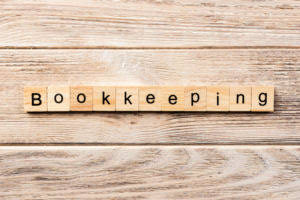If you buy qualifying property with cash and a trade-in, its cost for purposes of the section 179 deduction includes only the cash you paid. Generally, you cannot claim a section 179 deduction based on the cost of property you lease to someone else. However, you can claim a section 179 deduction for the cost of the following property. You generally deduct the cost of repairing business property in the same way as any other business expense.
Under MACRS, Tara is allowed 4 months of depreciation for the short tax year that consists of 10 months. The corporation first multiplies the basis ($1,000) by 40% to get the depreciation for a full tax year of $400. The corporation then multiplies $400 by 4/12 to get the short tax year depreciation of $133. The applicable convention establishes the date property is treated as placed in service and disposed of. Depreciation is allowable only for that part of the tax year the property is treated as in service. The recovery period begins on the placed in service date determined by applying the convention.
Straight Line Method – Key takeaways
The initial cost of an asset will determine how much is depreciated each year. During the first year of use of an asset, the IRS sometimes is not allowed to deduct its full cost. In such a case, the IRS uses MACRS for those assets, including intangible assets, instead of amortizing them. For tax calculation purposes, the Internal Revenue Service (IRS) has a depreciation method known as the Modified Accelerated Cost Recovery System (MACRS).
Depreciate the part of the new automobile’s basis that exceeds its carryover basis (excess basis) as if it were newly placed in service property. This excess basis is the additional cash paid for the new automobile in the trade-in. If your business use of the car had been less than 100% during any year, your depreciation deduction would have been less than the maximum amount allowable for that year.
Real-World Implications of Depreciation Methods
The straight line basis is also known as straight line depreciation. Suppose an asset for a business cost $11,000, will have a life of 5 years and a salvage value of $1,000. While this method is praised for its simplicity and consistent budgeting aid, it’s critical to cautiously estimate an asset’s useful life and salvage value to avoid common errors in financial reporting. The Value of Salvage is the estimated amount the asset will be worth if you were to sell it at the end of its useful life. For example, if you had a car that you wanted to trade in for a new one, the value of the old car would be based on the Kelley Blue Book value, which is what the dealer will pay you (Value of Salvage) for that car.
Whether your tax year is a 12-month or short tax year, you figure the depreciation by determining which recovery years are included in that year. For each recovery year included, multiply the depreciation attributable to that recovery year by a fraction. The fraction’s numerator is the number of months straight line depreciation formula (including parts of a month) that are included in both the tax year and the recovery year. The allowable depreciation for the tax year is the sum of the depreciation figured for each recovery year. Tara Corporation, a calendar year taxpayer, was incorporated and began business on March 15.
ACRS (Modified Accelerated Cost Recovery System)
Use the resulting business cost to figure your section 179 deduction. This chapter explains what property does and does not qualify for the section 179 deduction, what limits apply to the deduction (including special rules for partnerships and corporations), and how to elect it. You can elect to recover all or part of the cost of certain qualifying property, up to a limit, by deducting it in the year you place the property in service. You can elect the section 179 deduction instead of recovering the cost by taking depreciation deductions. If you deducted an incorrect amount of depreciation in any year, you may be able to make a correction by filing an amended return for that year. If you are not allowed to make the correction on an amended return, you may be able to change your accounting method to claim the correct amount of depreciation.
In May 2022, Sankofa sells its entire manufacturing plant in New Jersey to an unrelated person. The sales proceeds allocated to each of the three machines at the New Jersey plant is $5,000. This transaction is a qualifying disposition, so Sankofa chooses to remove the three machines from the GAA and figure the gain, loss, or other deduction by taking into account their adjusted bases. If you dispose of GAA property in an abusive transaction, you must remove it from the GAA.
After you figure the full-year depreciation amount, figure the deductible part using the convention that applies to the property. For 3-, 5-, 7-, or 10-year property used in a farming business and placed in service after 2017, in tax years ending after 2017, the 150% declining balance method is no longer required. However, it does not reflect any reduction in basis for any special depreciation allowance.. However, you do not take into account any credits, tax-exempt income, the section 179 deduction, and deductions for compensation paid to shareholder-employees. For purposes of determining the total amount of S corporation items, treat deductions and losses as negative income. In figuring the taxable income of an S corporation, disregard any limits on the amount of an S corporation item that must be taken into account when figuring a shareholder’s taxable income.



